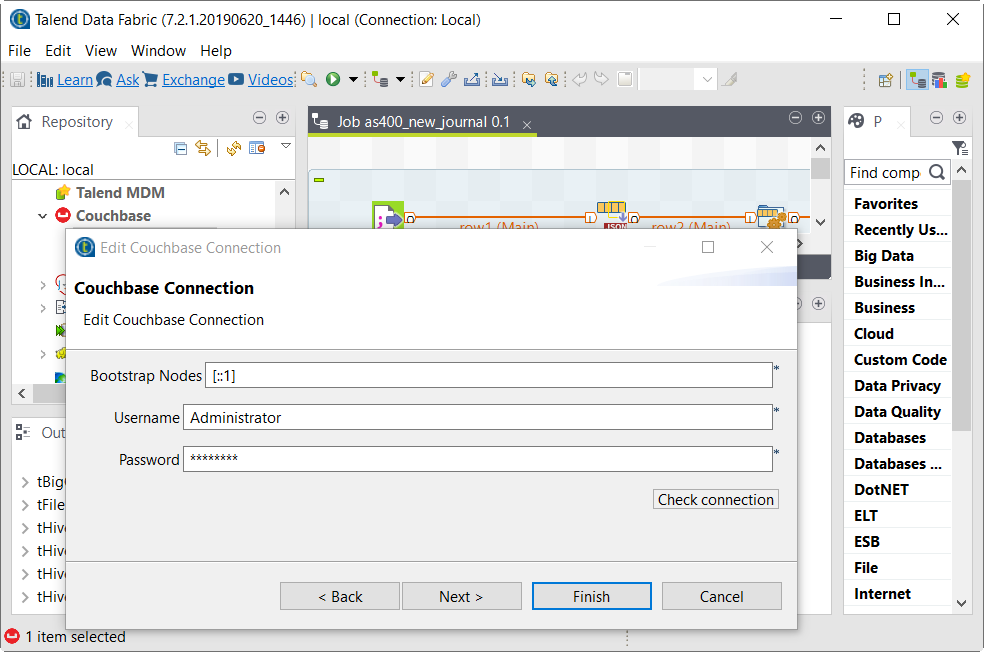Centralizing Couchbase metadata
Define the connection metadata to your Couchbase cluster in the Repository of the Studio.
You can then reuse this connection metadata in your Jobs running with Couchbase, without having to manually configure this connection in each Job.
Centralizing the connection metadata is recommended, as this allows you to easily manage the connections to your clusters.
Before you begin
Procedure
Did this page help you?
If you find any issues with this page or its content – a typo, a missing step, or a technical error – let us know how we can improve!

